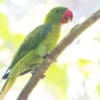DID YOU KNOW?
Some of the Azure-rumped Parrot’s calls can be described as ‘barking.’

Tanygnathus

sumatranus
Size:
32 cm (12.5 in)
Weight:
230-330 g (8-11.5 oz)
Subspecies including nominate:
two: T.s. sumatranus, T.s. sangirensis
Colour Adult:
T.s. sumatranus: Both adults-blue rump and lower back; lesser and primary coverts green, marked with blue. Red beak in male, white in female. Eye yellow.
T.s. sangirensis: Both adults-as in sumatranus, but more blue on bend of wing and lesser wing coverts.
Colour Juvenile:
As in adults.
Call:
Calls described as loud and barking; also disyllabic call followed by upslurred, nasal screeching note; musical quavering shriek and single, nasal-sounding squawk. While perched gives single loud notes.
More Information:
Content Sources:
CITES
BirdLife International
Cornell Lab of Ornithology/Birds of the World
Parrots: A Guide to Parrots of the World, Juniper and Parr, 1998
Parrots of the World, Forshaw and Cooper, 1977, 1989. 2010 edition
Parrots of the World, Forshaw, 2006.
Parrots in Aviculture, Low, 1992.
Captive Status:
Uncommon.
Longevity:
—
Housing:
Walk-in aviary or enclosure, minimum length 3 m (9.8 ft).
Diet:
Mix of small seeds: canary, oats, safflower; spray millet; limited sunflower seed, dry, soaked or sprouted; sprouted mung or other beans, cooked butterbeans or lentils; boiled corn; fresh green leaves (Swiss chard, lettuce, sowthistle, dandelion, chickweed; vegetables including carrot, celery, squash or zucchini, green beans or peas in the pod; fruit including apple, orange, pear, cactus fruits and bananas; nuts such as walnuts, hazelnuts, pecans and roasted peanuts; complete pellet.
Enrichment:
Bathing, parrot play gyms, large parrot toys and safe chewables.
Nest Box Size:
10″ x 10″ x 22″ (25.4 cm x 25.4 cm x 55.9 cm) vertical box.
Clutch Size:
2 to 3
Fledging Age:
9 weeks
Hatch Weight:
—
Peak Weight:
—
Weaning Weight:
—
World Population:
More than 10,000 mature individuals, decreasing.
IUCN Red List Status:
Least Concern
CITES Listing:
Appendix II
Threat Summary:
Not globally threatened. Estimating the effect of habitat loss on population decline is difficult due to its apparent tolerance to forest degradation. May however be trapped for trade, thus the rate of decline is tentatively 5-15%.
Range:
T.s. sumatranus: Sulawesi and nearby islands, Indonesia.
T.s. sangirensis: Talaud and Sangihe Islands, Indonesia.
Habitat:
Occurs in lowland and lower mountain forest, along forest edge and occasionally in plantations or paddyfields up to 800 m (2624 ft), mostly below 500 m (1640 ft).
Wild Diet:
Diet includes fruits of Leptospermum and Ficus, nuts, seeds and berries, and occasionally cultivated crops.
Ecology and Behaviour:
Resident, quiet and inconspicuous. Fairly approachable in areas where not harassed. Mostly encountered singly, in pairs or less often in flocks of up to 15 individuals. Active at night.
Clutch and Egg Size:
2 to 3 broadly elliptical eggs, 42.0 x 30.0 mm (1.6 x 1.2 in)
Breeding Season:
October-November. Nest is in tree cavity.
Related Links:
—
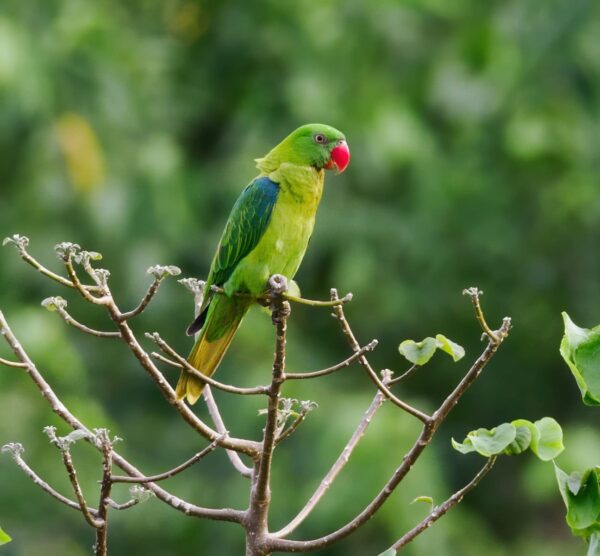
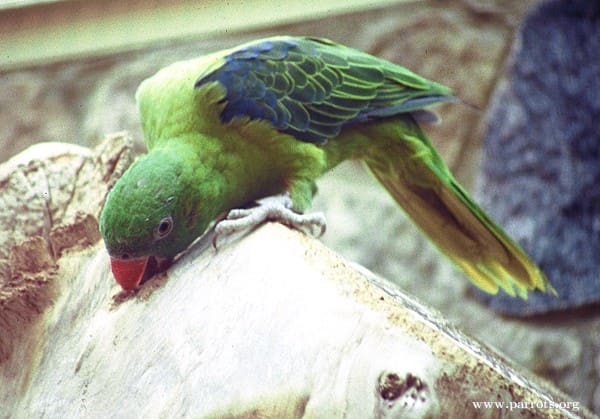
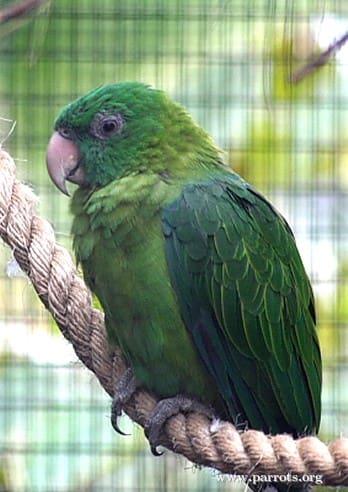
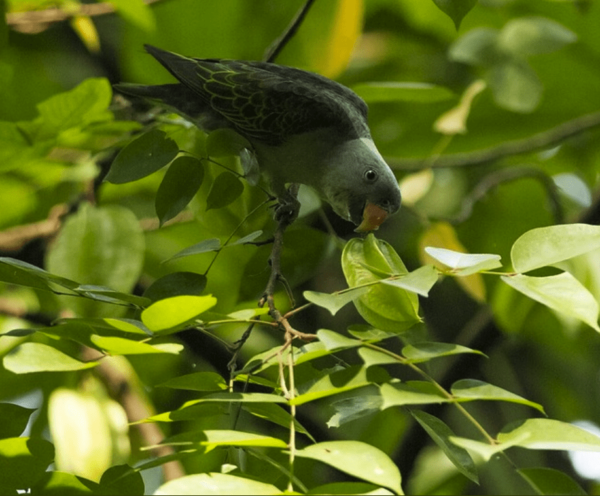
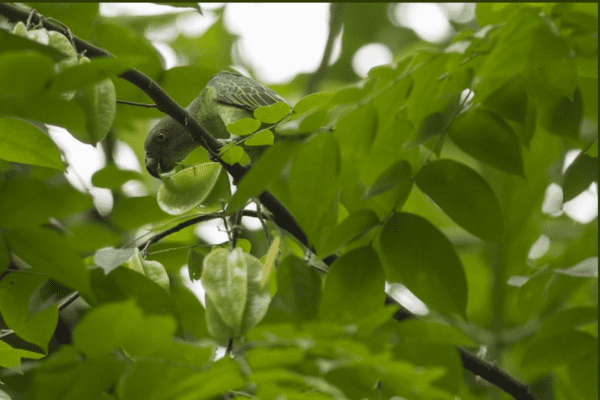
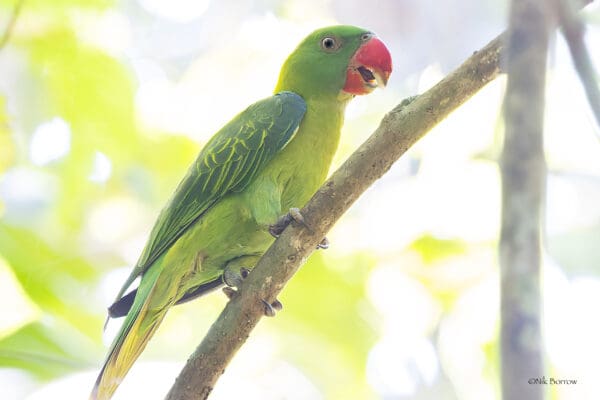
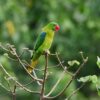
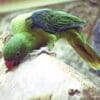
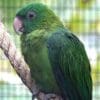
![© David Tan [CC BY-NC-SA 2.0] via Flickr A wild Azure-rumped Parrot perches on a twig](https://parrots.org/wp-content/uploads/2023/01/Wild-Azure-rumped-Parrot-e1731255578227-100x100.png)
![© David Tan [CC BY-NC-SA 2.0] via Flickr A wild Azure-rumped Parrot feeds in a tree](https://parrots.org/wp-content/uploads/2023/01/Wild-Azure-rumped-Parrot2-100x100.png)
